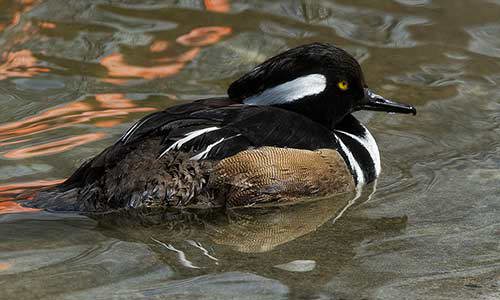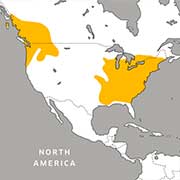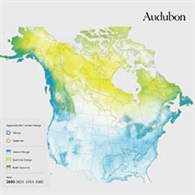Please note: On Wednesday April 24 at Franklin Park Zoo and Thursday, April 25 at Stone Zoo, volunteers, zoo employees and local emergency responders will take part in routine animal escape exercises. While the exercise is occurring, guests have the opportunity to participate in the evacuation portion, and may be asked to move to certain areas within the Zoo for a brief period of time (not to exceed 10 minutes). These exercises are an important part of our preparedness training, and we appreciate your participation and understanding. If you have any questions about what to expect, please don't hesitate to contact us at 617-989-2000 or info@zoonewengland.org.
x
-
-
Home
Franklin Park Zoo
Stone Zoo
-
Home
-
Visit
Tickets & Membership
-
Discover
Programs & Education
-
Protect
Conservation
- Protect
-
Here in New England
- Here in New England
-
Join the Conservation Society
-
Turtle Conservation
-
Amphibian Conservation
- Franklin Park Biodiversity Project
- New England Blazing Star and Native Pollinators
- Fish Conservation
- Protecting Habitats with the Motus Wildlife Tracking System
- Boston Area City Nature Challenge
- Make a Donation
-
Around the Globe
- Around the Globe
- One Health in Madagascar
- Snow Leopard Conservation
- Cross-River Gorilla Conservation
- Hicatee Turtle Conservation
- Panama Amphibian Rescue and Conservation Project
- Northern Jaguar Conservation
- African Lion Conservation
- African Painted Dog Conservation
- Mexican Gray Wolf Conservation
- Giraffe Conservation
- Baird's Tapir Conservation
- Short-tailed Chinchilla Conservation
- Cuban Solenodon Conservation
- BirdsCaribbean: Conserving Migratory Birds
- Kori Bustard and Kiwi Conservation
- Northern White-Cheeked Gibbon Conservation
- Sabin Snow Leopard Grants Program
- Graduate Scholarship Program
- Wildlife Trafficking Alliance: Be Informed. Buy Informed.
-
Inside our Zoos
-
What You Can Do
-
Celebrate
Parties & Private Events
-
Act
Support Your Zoos
- Act
- Make a Donation
-
Ways to Give
- Ways to Give
- The African Experience
- Red Panda Conservation Complex
- ZNE License Plate
- Corporate Support
- Foundation Support
- Mural Project: Handle with Care
- Honor/Memorial Gifts
- Jonathan Gilmour Memorial Scholarship Fund
- Leave a Legacy
- Louise Felton Zookeepers’ Memorial Fund
- Matching Gifts
- Oral Health Care Among Species Program
- President's Circle
- Shop our Wishlist
- Sponsor a Bench
- Support our Field Conservation Department
- Zoodopt
- The Wild Things Membership
- Zoodopt an Animal
- Annual Reports & Financial Statements
- Contact Us
-
Engage
Special Events
- Give Now: All For Our Animals
-
About Us
-
Jobs & Volunteering
- Zoo News
- Conservation Blog
- Kids' Corner
- Media
- Contact Us
- Accessibility Statement
- Sitemap
-
Franklin Park Zoo
- Buy Tickets
- Hours, Info & FAQ
- Map
-
Our Animals
- Our Animals
-
Mammals
- African Lion
- African Painted Dog
- Bactrian Camel
- Baird's Tapir
- Black-Tailed Prairie Dog
- Cape Porcupine
- Cotton-Top Tamarin
- De Brazza's Monkey
- Dexter Cow
- Giant Anteater
- Guinea Hog
- Hartmann’s Mountain Zebra
- Linne’s Two-toed Sloth
- Lowland Nyala
- Masai Giraffe
- Morgan Horse
- Nigerian Dwarf Goat
- Poitou Donkey
- Potto
- Pygmy Hippopotamus
- Red Kangaroo
- Red Panda
- Red River Hog
- Red-necked Wallaby
- Reeves's Muntjac
- Ring-Tailed Lemur
- Ruwenzori Fruit Bat
- Sardinian Dwarf Donkey
- Somali Wild Ass
- Spotted Hyena
- Straw-Colored Fruit Bat
- Warthog
- Western Grey Kangaroo
- Western Lowland Gorilla
- White-Bearded Wildebeest
-
Reptiles & Amphibians
-
Birds
- African Pygmy Falcon
- Andean Condor
- Azure-Winged Magpie
- Baikal Teal
- Bali Mynah
- Barn Owl
- Barrow's Goldeneye
- Black Crake
- Black Swan
- Black-Naped Fruit Dove
- Boat-Billed Heron
- Bourke's Parrot
- Brown Kiwi
- Budgerigar
- Bufflehead Duck
- Cabot’s Tragopan
- Canvasback
- Citron-Crested Cockatoo
- Eastern Screech Owl
- Emu
- Golden Pheasant
- Gouldian Finch
- Hadada Ibis
- Hamerkop
- Heritage Chicken
- Hooded Crane
- Hooded Merganser
- Indian Blue Peafowl
- Kea
- Kookaburra
- Kori Bustard
- Madagascar Sacred Ibis
- North American Wood Duck
- Northern Shoveler
- Orange Bishop
- Ostrich
- Red-Breasted Goose
- Red-Breasted Merganser
- Red-Crested Turaco
- Ringed Teal
- Saddle-Billed Stork
- Scaly-Sided Merganser
- Steller’s Sea Eagle
- Sunbittern
- Tawny Frogmouth
- Wattled Crane
- White-Naped Crane
- Yellow-Billed Stork
- Yellow-Rumped Cacique
-
Fish
-
Insects & Spiders
-
Exhibits
- Winter Visits
- What's Happening
- Attractions
- Shopping and Dining
- Behind-the-Scenes Tours
-
Stone Zoo
- Buy Tickets
- Hours, Info & FAQ
- Map
-
Our Animals
- Our Animals
-
Mammals
- Black Bear
- Bush Dog
- Canada Lynx
- Chacoan Peccary
- Coati
- Colobus Monkey
- Cotton-Top Tamarin
- Jaguar
- Linne’s Two-toed Sloth
- Markhor
- Mexican Gray Wolf
- North American Porcupine
- North American River Otter
- Nubian Goat
- Prehensile-Tailed Porcupine
- Red-Rumped Agouti
- Reindeer
- Ringtail
- Rock Hyrax
- Seba’s Short-Tailed Bat
- Snow Leopard
- Southdown Sheep
- White-Cheeked Gibbon
- Yak
-
Reptiles & Amphibians
-
Birds
- Insects, Spiders & Crustaceans
-
Exhibits
- Winter Visits
- What's Happening
- Attractions
- Shopping and Dining
- Behind-the-Scenes Tours

© 2024 Commonwealth Zoological Corporation dba Zoo New England, All Rights Reserved




